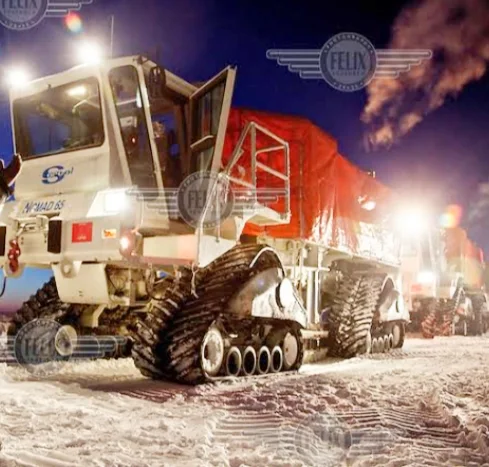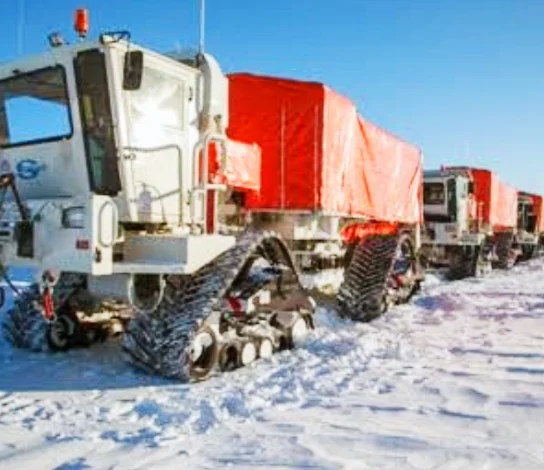Unveiling the Hidden: Ground Penetrating Radar (GPR) Technology
Ground Penetrating Radar (GPR) is a technological marvel that acts like an X-ray for the earth.
Unlike its medical counterpart, GPR utilizes radio waves to create images of what lies beneath the surface. This non-intrusive method offers a valuable tool for various applications, from archaeology and environmental investigations to construction and utility mapping.
Ground Penetrating Radar (GPR) Technology: A Detailed Look
| Feature | Description |
|---|---|
| Technology Type | Non-destructive geophysical method |
| Function | Creates high-resolution images of the subsurface using pulsed electromagnetic waves (radio waves) |
| Typical Frequency Range | 10 MHz to 2.6 GHz |
| Data Acquisition | Ground penetrating radar unit transmits radio waves through an antenna, receiving antenna detects reflected signals |
| Data Interpretation | Reflected signals are analyzed based on strength, travel time, and frequency to identify objects and material boundaries |
| Applications | * Archaeology: Locating buried structures, tombs, and artifacts |
| Advantages | * Non-destructive: Minimizes disturbance to the ground compared to traditional excavation methods * Fast and Cost-effective: Saves time and resources compared to drilling or trenching * Adaptable: Can be used in various terrains (deserts, frozen landscapes) with some limitations |
| Limitations | * Depth Penetration: Effectiveness depends on ground composition. Conductivity (e.g. clay) can limit signal travel. * Data Interpretation: Requires expertise to distinguish objects and materials based on signal variations * Resolution: Lower resolution compared to some other imaging techniques at greater depths |
Seeing Through the Ground
GPR works by emitting short bursts of electromagnetic waves from an antenna. These waves travel through the ground, and when they encounter objects or boundaries between different materials, they are reflected back to the surface. The GPR system then records these reflections, allowing technicians to create a profile of the subsurface.
The key to GPR's effectiveness lies in the varying responses of different materials to the radio waves. For instance, metal objects like pipes and wires will cause strong reflections, while water-saturated soil may produce weaker signals. By analyzing these variations, GPR specialists can decipher the information and create a visual representation of the underground landscape.
Applications of GPR Technology
The ability to see underground makes GPR a valuable tool across numerous fields. Here are some of its prominent applications:
- Archaeology: GPR helps archaeologists locate buried structures, tombs, and artifacts without disturbing the site.
- Environmental Investigations: GPR can be used to map underground contaminants like plumes or buried waste, aiding in environmental cleanup efforts.
- Construction and Utility Mapping: GPR assists in locating and identifying underground utilities like pipes, cables, and foundations before construction begins, preventing accidental damage.
- Road Inspections: GPR can detect cracks and voids within road structures, enabling early intervention for repairs and infrastructure maintenance.
- Forensics: GPR can be used to locate unmarked graves or hidden evidence in criminal investigations.
Advantages and Limitations
One of the significant advantages of GPR is its non-destructive nature. Unlike traditional excavation methods, GPR doesn't require digging, making it a faster and more cost-effective approach. Additionally, GPR is versatile and can be employed in various terrains, from dry deserts to frozen landscapes.
However, GPR also has limitations. The effectiveness of GPR is highly dependent on the composition of the ground. For instance, GPR signals can be significantly attenuated in conductive soils like clay, limiting its depth penetration. Additionally, interpreting GPR data requires expertise and experience to distinguish between different objects and materials.
Key Takeaway
Ground Penetrating Radar (GPR) is a powerful tool that has revolutionized our ability to see beneath the surface. From uncovering the secrets of the past to ensuring safe construction practices, GPR applications continue to grow and evolve. As GPR technology advances, we can expect even more innovative ways to utilize this technology for the benefit of various industries and scientific endeavors.
Ground Penetrating Radar: Unveiling the Hidden World - Key Players in the GPR Market
Ground Penetrating Radar (GPR) technology has become an invaluable tool for peering beneath the surface of the earth. This non-destructive method utilizes radio waves to create images of what lies hidden below, with applications ranging from archaeology and environmental assessments to construction and utility mapping.
Key Players in the Ground Penetrating Radar (GPR) Market
| Company | Headquarters | Products | Applications | Website |
|---|---|---|---|---|
| IDS Georadar | Italy | * Streamlined GPR systems for various applications * High-performance antennas * Advanced data acquisition software | Archaeology, environmental, construction & utility mapping, forensics | https://idsgeoradar.com/ |
| Sensors & Software Inc. | Canada | * User-friendly GPR systems * Application-specific GPR solutions * Data processing software | Archaeology, environmental, construction & utility mapping, road inspections | https://www.sensoft.ca/ |
| Guideline Geo | Sweden | * High-performance GPR systems for challenging environments * Durable and portable GPR solutions | Construction & utility mapping (rough terrains, remote locations), environmental | https://www.guidelinegeo.com/ |
| Geophysical Survey Systems, Inc. (GSSI) | USA | * Wide range of GPR systems and accessories * Reliable and versatile GPR solutions | Archaeology, environmental, construction & utility mapping, road inspections, forensics | https://www.geophysical.com/contact |
| Hexagon AB | Sweden | * Advanced sensor technologies, including GPR solutions (through subsidiaries) | Varied applications depending on subsidiary | https://hexagon.com/ |
| SPX Corporation | USA | * GPR solutions offered through acquired companies | Varied applications depending on acquired company | https://www.spx.com/ |
| Chemring Group PLC | UK | * GPR equipment for various applications | Construction & utility mapping, environmental, forensics | https://www.chemring.com/ |
As the GPR market continues to grow, several key players are at the forefront of developing and supplying this innovative technology. Here's a look at some of the major companies shaping the GPR landscape:
Industry Leaders:
- IDS Georadar (Italy): A leading global provider of GPR solutions, IDS Georadar offers a comprehensive range of GPR systems for various applications. They are known for their high-performance antennas and advanced data acquisition software.
- Sensors & Software Inc. (Canada): Specializing in GPR technology since 1982, Sensors & Software Inc. is renowned for its user-friendly GPR systems and data processing software. They cater to a wide range of industries with application-specific solutions.
- Guideline Geo (Sweden): This Swedish company focuses on developing high-performance GPR systems for challenging environments. Their GPR solutions are known for their durability and portability, making them suitable for rough terrains and remote locations.
- Geophysical Survey Systems, Inc. (GSSI) (USA): A pioneer in GPR technology, GSSI offers a vast selection of GPR systems and accessories. They are known for their reliable and versatile GPR solutions used extensively in various fields.
Other Notable Players:
- Hexagon AB (Sweden): This multinational corporation provides advanced sensor technologies, including GPR solutions through their subsidiaries.
- SPX Corporation (USA): Another major player in the broader sensing and measurement technology space, SPX Corporation offers GPR solutions through some of its acquired companies.
- Chemring Group PLC (UK): This diversified technology group has a GPR division that manufactures and supplies GPR equipment for various applications.
Choosing the Right GPR Provider:
The ideal GPR provider depends on your specific needs and application. Here are some factors to consider when making your choice:
- Product Range: Does the company offer GPR systems suitable for your desired depth penetration, target objects, and data acquisition needs?
- Software Capabilities: Consider the ease of use and features offered by the GPR data processing software.
- Application Expertise: Does the company have experience in your specific field of GPR application?
- Customer Support: Reliable after-sales support and training are crucial for maximizing the effectiveness of your GPR system.
The Future of GPR Technology
With continuous advancements in GPR technology, we can expect even more innovative solutions from these key players. Developments like improved data processing algorithms, integration with other sensing technologies, and miniaturized GPR systems are likely to shape the future of GPR. As GPR technology becomes more sophisticated and accessible, its applications will undoubtedly continue to expand, leading to even greater insights into the hidden world beneath our feet.
Frequently Asked Questions About Ground Penetrating Radar (GPR) Technology
Ground Penetrating Radar (GPR) is a geophysical method used to image the subsurface by transmitting electromagnetic waves into the ground and measuring the reflected signals. It provides high-resolution information about the subsurface structure and properties.
Basic Concepts
- What is GPR?
- GPR is a geophysical method that uses electromagnetic waves to image the subsurface.
- How does GPR work?
- GPR involves transmitting electromagnetic waves into the ground through an antenna and measuring the reflected signals. The time it takes for the signals to return can be used to determine the depth and properties of subsurface features.
Applications of GPR
- What are the main applications of GPR?
- GPR has a wide range of applications, including:
- Archaeology: Locating archaeological sites and artifacts.
- Geotechnical engineering: Investigating subsurface conditions for construction projects.
- Environmental studies: Monitoring groundwater contamination and soil pollution.
- Utility detection: Locating underground utilities, such as pipes and cables.
- Forensic investigations: Investigating crime scenes and locating buried evidence.
- GPR has a wide range of applications, including:
- How is GPR used in archaeology?
- GPR can be used to detect subsurface anomalies that may indicate the presence of archaeological sites, such as buried structures or artifacts.
Challenges and Limitations
- What are the challenges of using GPR?
- Challenges include:
- Ground conditions: GPR is less effective in areas with high moisture content or conductive materials.
- Noise: Noise from various sources, such as electrical interference, can affect GPR measurements.
- Data interpretation: Interpreting GPR data can be complex and requires specialized knowledge.
- Challenges include:
- What are the limitations of GPR?
- GPR is limited by its depth of penetration, which depends on the electrical conductivity of the subsurface and the frequency of the transmitted waves.
Future Directions
- What are the future directions of GPR?
- Future directions include:
- Development of new antennas: Developing antennas with improved performance and capabilities.
- Integration with other geophysical methods: Combining GPR with other geophysical techniques, such as electrical resistivity tomography and magnetotellurics.
- Automation: Developing automated GPR systems to improve efficiency and reduce costs.
- Future directions include:




